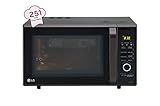How To Pick A Rice Cooker That Will Not Overcook Basmati Rice: A Complete Buying Guide
Perfectly fluffy basmati rice is not just a dream; it is a science that begins with choosing the right rice cooker. This is a detailed, down-to-earth guide to help you find one that doesnt turn your aromatic grains into sticky mush. Cook rice to perfection by choosing the right cooker, just follow these simple steps.

How To Choose A Good Rice Cooker That Does Not Overcook Basmati.
There's something deeply comforting about the aroma of basmati rice wafting through the kitchen, that nutty fragrance, those long, slender grains, each separate yet soft. But this culinary magic often turns tragic when the rice cooker decides to wage war on your dinner plans. Overcooked, clumpy basmati isn't just disappointing; it's an insult to the grain's royal reputation. In the age of automation, rice cookers promise convenience, but not all of them are kind to basmati. The trick lies in finding one that understands the grain's delicate temperament. Too much heat, and it becomes a gummy disaster; too little, and it's half-cooked misery.
Choosing the right rice cooker is about more than wattage and buttons; it's about understanding your kitchen companion. Let's explore the features, quirks, and small secrets that can save you from soggy regret and help you master the art of cooking perfect basmati every single time. Here is how to choose the right rice cooker that won't overcook your precious Basmati rice and also, check the top picks from Preethi, Pigeon, Panasonic to Agaro.

Explore helpful tips to choose the best rice cooker; Photo Credit: Freepik
Also Read: Creative Rice Cooker Recipes Beyond Just Rice, Soups, Idlis And Curries
Essential Tips For Picking The Right Rice Cooker For Fluffy Basmati
1. The Secret Lies in Fuzzy Logic Technology
Modern rice cookers aren't all the same, and 'fuzzy logic' models deserve special attention. This clever technology allows the cooker to think for itself, adjusting temperature and cooking time automatically. Imagine it as a smart chef who knows when to lower the flame just as the rice begins to fluff up.
When cooking basmati, this feature makes all the difference. Unlike starchy short-grain rice, basmati demands gentle heat and precise moisture control. Fuzzy logic ensures that the cooker responds to the changing conditions inside, too much steam? It cools down. Too dry? It compensates.
Brands like Panasonic, Zojirushi, and Prestige offer models that use this intelligent heating method. Yes, they might cost a little more, often in the ₹4,000–₹7,000 range, but the results justify every rupee. Think of it as investing in peace of mind and perfect rice every day.
2. The Importance of the Inner Pot Material
The inner pot is where the magic happens, and the material makes or breaks your rice. Many budget cookers use thin aluminium pots, which heat unevenly and stick easily. The result? Crispy bits at the bottom and mushy grains on top.
Look for rice cookers with thick, non-stick coated pots or stainless steel interiors. Non-stick ones distribute heat evenly and make cleaning a breeze, while stainless steel retains flavour and prevents chemical leaching.
Some premium cookers even come with multi-layered pots, aluminium for conductivity, stainless steel for durability, and ceramic coating for natural non-stickiness. If you've ever struggled to scrape rice from the bottom, you'll know why this matters.
A sturdy, well-coated pot is the unsung hero of fluffy basmati. It's worth spending that extra ₹1,000–₹1,500 for quality, your rice will thank you.
3. The Ideal Capacity for Everyday Cooking
Buying the biggest cooker in the shop may sound tempting, but size matters more than you think. A large cooker used for small portions often traps too much steam, making basmati sticky and overdone.
For a family of four, a 1.8-litre rice cooker usually hits the sweet spot, enough to cook up to 1 kg of rice comfortably. Those who live alone or cook smaller meals might prefer a 1-litre model. Larger families or those who entertain guests frequently can look at 2.2 litres or more.
The rule of thumb? Don't fill the pot beyond two-thirds of its capacity. Overcrowded rice grains don't get enough breathing room, and the steam has nowhere to escape. The result is an uneven texture, soft below, firm above.
A cooker that fits your lifestyle ensures consistency, and that's half the battle won.

Choose the right capacity as per your dietary requirements; Photo Credit: Pexels
4. The Power of Keep-Warm Settings
A rice cooker's keep-warm mode can be both a blessing and a curse. While it's designed to hold your rice at serving temperature, poor models end up drying or overcooking it.
Look for cookers with automatic, temperature-controlled keep-warm functions that switch modes once the rice is perfectly done. The good ones maintain gentle warmth, preserving moisture without continuing to cook.
Some advanced models can even keep your rice fresh for up to 12 hours without a hint of stickiness. That's particularly useful on busy days when mealtime stretches across hours.
A good tip: avoid keeping rice in the cooker for more than four hours if your model isn't designed for extended holding. Even the best basmati deserves a plate before it loses its charm.
5. The Significance of Steam Vents and Lids
The humble steam vent doesn't get enough credit. Basmati releases more steam than many other varieties, and without proper ventilation, the pressure inside the cooker rises, leading to overcooked rice.
Choose models with well-designed steam vents that prevent excess moisture from dripping back onto the grains. Transparent glass lids are another smart feature; they let you sneak a peek without lifting the cover, helping you track the process without disturbing the steam balance.
Detachable lids and vents are a bonus. They make cleaning easier, preventing residue build-up that can alter the cooker's performance over time.
A clean lid, a clear view, and a gentle venting system are like a trio that keeps your basmati light, long, and fragrant, just the way it should be.
6. Multiple Cooking Modes Matter
The best rice cookers are versatile creatures. Beyond plain rice, they let you experiment with pulao, khichdi, or even idli batter fermentation. But when it comes to basmati, what you truly need is a dedicated 'rice type' setting.
Cookers with separate modes for long-grain rice tend to adjust the cooking cycle automatically. This prevents over-boiling and helps retain the signature basmati aroma. Some even offer a 'slow cook' mode, a lifesaver when you want each grain to bloom gently.
A multi-mode cooker, often in the ₹5,000–₹8,000 range, is worth the splurge if you love variety. It's like having a sous chef who knows the difference between a biryani night and a weekday dal-chawal dinner.

Ensure that the cooker offers multiple cooking modes; Photo Credit: Unsplash
7. The Role of Wattage and Heating Efficiency
Wattage isn't just a number on the box, it directly affects how your rice cooks. A cooker with low wattage (under 500W) takes longer to heat up, often leading to uneven results. On the flip side, excessively high wattage (above 1000W) may rush the process and scorch the bottom layer.
For basmati, the sweet spot is between 700W and 900W. This range allows gradual, even heating, perfect for maintaining the rice's structure.
Energy-efficient models with advanced heat sensors can even help lower electricity costs in the long run. The next time you read a label, remember: wattage is the silent architect behind that perfect bowl of rice.
8. Cleaning and Maintenance Convenience
Let's face it, no one wants to scrub stubborn rice crusts after dinner. A good rice cooker should make cleanup quick and painless.
Non-stick pots, detachable lids, and removable steam vents simplify the process immensely. Some modern designs even feature dishwasher-safe components, though a gentle hand wash usually keeps them in better shape.
Regular cleaning isn't just about hygiene; it ensures the cooker performs consistently. Built-up residue can interfere with sensors and cause temperature inaccuracies, the hidden culprits behind overcooked rice.
A cooker that's easy to maintain will stay loyal for years. Think of it as a long-term kitchen friendship, low drama, high reward.
9. Brand Reliability and After-Sales Support
In a market overflowing with options, brand reputation matters. A trusted name often means tested performance, quality materials, and responsive customer care.
Look for brands that offer at least two years of warranty and accessible service centres in your city. It's also wise to check online reviews, not the overly polished ones, but real user experiences that talk about long-term performance.
Reliable names like Panasonic, Bajaj, Philips, and Butterfly have built their credibility through consistency. Spending a little extra on a reputed brand may feel indulgent, but it pays off when your cooker outlives the cheaper ones.
After all, the joy of perfect rice shouldn't come with the pain of chasing service calls.

Go for a reputed brand that offers great after sales support too
Photo Credit: Unsplash
10. Smart Features and Modern Add-ons
Modern rice cookers are evolving fast, some even connect to your smartphone. While that might sound futuristic, certain add-ons genuinely make life easier.
Features like delay timers allow you to set the cooker before leaving for work, ensuring fresh rice when you return. Others include auto-rinse functions, touch controls, or even voice prompts.
For those who love to multitask, Wi-Fi-enabled models can be a blessing. But remember, technology should simplify, not complicate. Choose features that match your lifestyle, not just your curiosity.
A balanced mix of practicality and innovation is what truly defines a good buy. Sometimes, it's the small touches, a beep at the right time, a soft lid handle, that turn cooking into a joy rather than a chore.
Products Related To This Article
1. Preethi Electric Rice Cooker
2. Pigeon by Stovekraft Joy Rice Cooker with Single pot
3. AGARO Imperial Electric Rice Cooker
4. CUCKOO Electric Rice Cooker
5. Panasonic SRWA 18 1.8 Liter Automatic Rice Cooker
6. Instant Pot 321 Duo 3 QT (2.6L)
7. Goodscity Multipurpose Electric Kettle with Ceramic Coating 1.2L
The quest for perfectly cooked basmati rice is not about fancy gadgets or blind faith in automation. It's about balance, between heat and patience, simplicity and precision. A good rice cooker respects the grain, much like a seasoned cook respects the recipe.
When shopping, think beyond brand names and discounts. Look for smart design, thoughtful engineering, and features that complement your daily rhythm. Whether it's the fuzzy logic brain or the humble steam vent, every detail contributes to that moment when you lift the lid and see long, fragrant grains waiting to be served.
Cooking basmati is an art, and the right rice cooker is your brush. Choose wisely, and every meal can be a masterpiece, one that starts not with fire, but with understanding.
Disclaimer: The images used in this article are for illustration purpose only. They may not be an exact representation of the products, categories and brands listed in this article.























